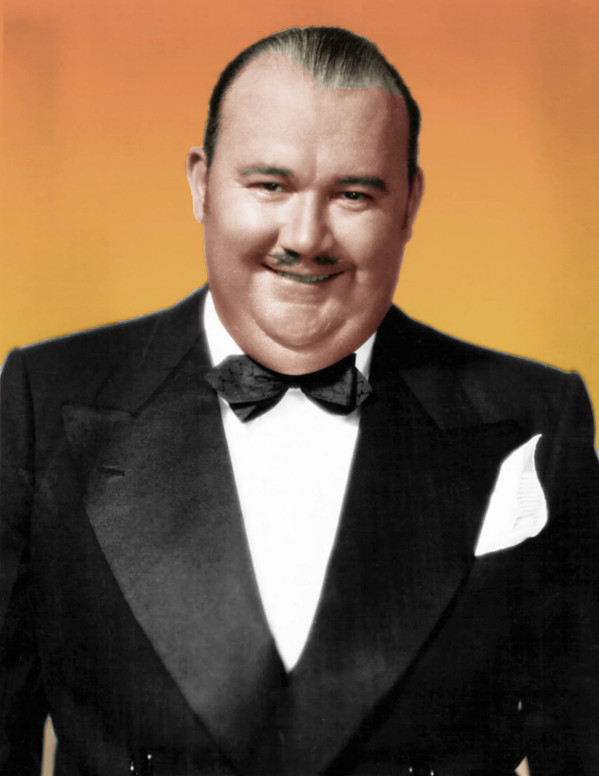


NEWS:
Three days left to hear November's shows streaming and vote in the 2025 Festive 50!
Artist Info
|
Paul Whiteman  Image from Discogs  Paul Whiteman (March 28, 1890 – December 29, 1967) was a popular American orchestral leader. He was born in Denver, Colorado. After a start as a classical violinist and violist, Whiteman then led a jazz-influenced dance band which became locally popular in San Francisco, California in 1918. In 1920 he moved his band to New York City where they started making recordings for Victor Records which propelled Whiteman and his band to national prominence. Whiteman became the most popular band leader of the decade. In the late 1920s he recorded for Columbia Records. Paul Whiteman (March 28, 1890 – December 29, 1967) was a popular American orchestral leader. He was born in Denver, Colorado. After a start as a classical violinist and violist, Whiteman then led a jazz-influenced dance band which became locally popular in San Francisco, California in 1918. In 1920 he moved his band to New York City where they started making recordings for Victor Records which propelled Whiteman and his band to national prominence. Whiteman became the most popular band leader of the decade. In the late 1920s he recorded for Columbia Records.In the 1920s and early 1930s Whiteman dubbed himself The King of Jazz (see: Jazz royalty). Much of what his band played hasn't been considered "true" jazz by later generations. Others reject these notions, and regard Whiteman's music as an interesting development in jazz history. He recorded Hoagy Carmichael singing and playing Washboard Blues to the accompaniment of his orchestra in 1926.[1] While today most fans of jazz consider improvisation to be essential to the musical style, Whiteman thought the music could be improved by scoring the best of it. Modern revisionists might look back & say "that wasn't the True Jazz", but his notions were critically popular and commercially successful at the time. Whiteman's music was often the first jazz of any form that some people heard. Duke Ellington wrote in his autobiography: "Paul Whiteman was known as the King of Jazz, and no one as yet has come near carrying that title with more certainty and dignity." Whiteman commissioned George Gershwin's Rhapsody in Blue, which was premiered by Whiteman's Orchestra with Gershwin at the piano in 1924. Another familiar piece in Whiteman's repertoire: Grand Canyon Suite, by Ferde Grofé (much of which was used in the score of A Christmas Story). Whiteman appreciated jazz musicians and hired many of the best white jazz men for his band, including Bix Beiderbecke, Frankie Trumbauer, Joe Venuti, Eddie Lang, Steve Brown, Mike Pingitore, Gussie Mueller, Jack Teagarden, and Bunny Berigan. Whiteman gave them constant chances to improvise, paid them top salaries and encouraged them to make small band jam recordings on the side. Paul Whiteman was primarily responsible for revolutionizing the dance orchestra and dance music after World War I. Prior to that time, dances were played by military bands, string ensembles, or small combinations. Working in 1918-19 with arranger Ferde Grofé and in parallel with fellow San Francisco bandleader Art Hickman, Whiteman introduced the saxophone section as a musical unit of equal weight with the brass. This set a standard for instrumentation that defined the dance orchestra, and remains in big bands to this day. Before Whiteman, musical arrangements were very cut-and-dried, with much repetition. Whiteman and Grofé introduced arrangements that instead of repeating, changed keys, textures and rhythms over their course, much like symphonic music. This innovation, combined with the jazz elements mentioned above, plus his insistence on using top notch, concert-calibre musicians, made Paul Whiteman's orchestra a vanguard force that changed the face of popular music in the 1920s. Whiteman was also one of the greatest of all talent scouts. For over 30 years, he sought out and encouraged musicians, vocalists, composers, arrangers and entertainers who looked promising. It is worth repeating that Whiteman not only premiered George Gershwin's "Rhapsody in Blue" in 1924, but commissioned him to write it, much to Gershwin's surprise at the time. Both Bing Crosby and Mildred Bailey got their start singing with the Whiteman Orchestra. In 1931, Whiteman married motion picture actress Margaret Livingston. After he disbanded his Orchestra, in the 1940s and 1950s Whiteman worked as a music director for the ABC Radio Network. He also hosted several television programs and continued to appear as guest conductor for many concerts. Paul Whiteman died at the age of 77 in Doylestown, Pennsylvania. Read more on Last.fm. User-contributed text is available under the Creative Commons By-SA License; additional terms may apply. Artist biography from last.fm Some other places to look for information: last.fm Discogs MusicBrainz |
